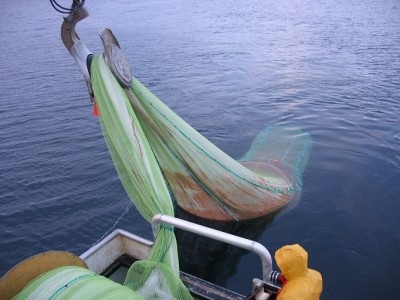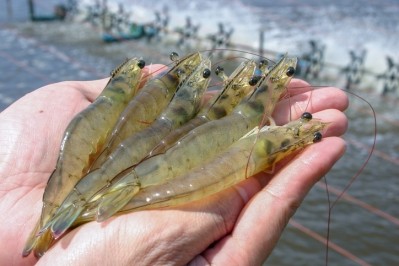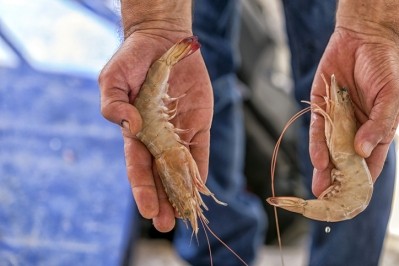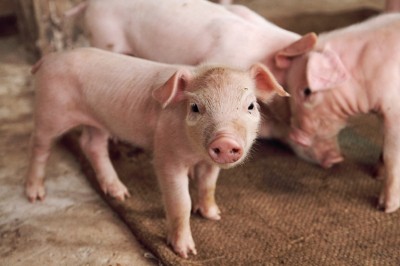Increasing daily feedings may boost shrimp growth, economic return
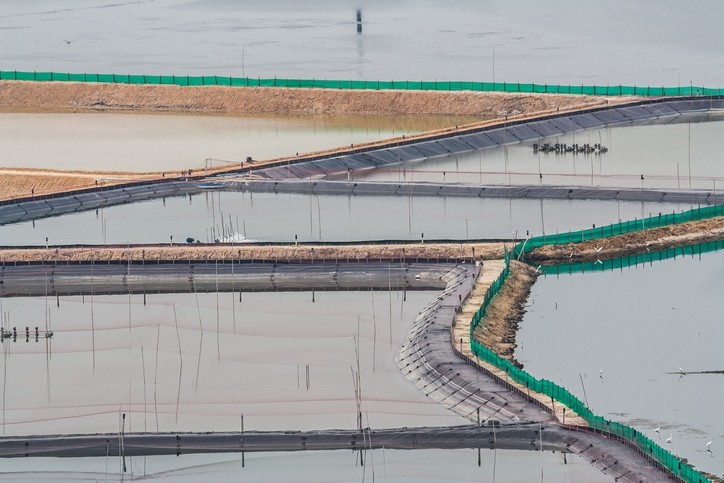
A team of researchers at Auburn University in Alabama explored the use of multiple feeding amounts and timing strategies in regards to shrimp growth and production. The team published its results in the journal Aquaculture.
Research into feeding practices with shrimp expanded out of work on developing new diets for shrimp, said Melanie Rhodes, corresponding author and research associate with the School of Fisheries at Auburn.
“We’ve been working for a number of years doing a lot of the diet formulations for shrimp and [working with] alternatives feeds trying to develop diets using alternatives for fishmeal and doing a lot of plant-based work,” she added.
“Once we had developed a lot of diets that can be produced inexpensively using a variety of plant proteins that still meet the feed requirements, then we started getting more into the feed management side of things,” she told FeedNavigator.
However, there remain challenges to shrimp production because there can be variation in how shrimp are fed, she added.
It can be hard to tell how much shrimp are eating and producers may not know if they are over or under feeding until the shrimp are harvested, she said.
That knowledge gap prompted more work aimed at better refining and establishing best practices.
“Some of the information that is out there is not replicated, so the producer might try it one year and it works and they try it the next year and it doesn’t – it’s kind of site and labor specific,” she said.
If producers have the labor pool they may be able to feed multiple times a day inexpensively, but that is not always an option, she added.
Feeding trials overview
In the feeding trial, shrimp were fed using one of four management systems for a period of 13 weeks, the researchers said. A commercially produced feed was used in the trials.
The feeding systems included a standard feeding protocol (SFP) where shrimp were hand fed twice daily; a timed feeding system that provided 15% more feed than what was provided in the SFP offering at 6 points in the day (Timer 15), a timed feed system providing 30% more feed also at six points throughout the day (Timer 30); and an acoustic feedback system (AQ1), which fed automatically based on detecting feeding activity.
“Since we’ve been feeding somewhat conservatively and get a good FCR we looked at seeing if we could increase the feeding amount,” added Rhodes. “When we started using the automated feeders they fed a lot more feed almost double or triple what we’d been feeding.”
The amount of feed used in the SFP system was determined using the expected weight gain per week, a feed conversion ratio (FCR) of 1.2 and the expected shrimp population in the tank, the researchers said.
Shrimp were sampled weekly throughout the trial to check individual weights and shrimp health, the researchers said. All shrimp were harvested at the end of the feeding period, weighed and analyzed.
Shrimp growth and production
During the feeding trials the researchers found that shrimp weights were different for all of the feeding systems, the researchers said.
Shrimp on the SFP feeding system was the smallest, weighing in at 19.74g, while those fed through the acoustic system were 32.04g on average, they said.
Shrimp on the Timer 15 diet averaged 25.15g and those in the Timer 30 system were 27.52g.
Shrimp yield from the AQ1 system was larger than those on the SFP system – 7,430 kg/ha to 4,843 kg/ha, respectively, they said. Use of the acoustic system also generated shrimp of higher value.
Feeding costs were different for all of the production systems, with the acoustic system being the most expensive, the researchers said.
Feed costs were $5,138, $6,063, $6,623 and $8,741 per ha, respectively, for the SFP, Timer 15, Timer 30 and AQ1 systems.
However, shrimp value increased from $32,982, $44,279, $52,687 to $65,587 moving from SFP, Timer 15, Timer 30 to the AQ1 system, they said. Partial income was the largest for the AQ1 system.
There were no major differences for shrimp survival or for feed conversion among the different production systems, the researchers said.
Initially, it was expected that use of the feed-on-demand system would improve the feed conversion ratio, said Rhodes. However, that result was not seen.
“It’s changing the size of the shrimp in the same amount of time, but the feed conversion stays the same,” she said.
The suggestion for shrimp producers at this point, if they do not have a good feed management plan or are not getting good feed conversion is to move to a system that uses the acoustic system to provide feed to their shrimp, she said.
“You really are feeding on demand and you’ll get the best results."
The research team has been able to trim its growing season from 120 to 90 days using more feedings and is still getting the same size shrimp, she said.
“We’re spreading the word to producers,” she added.
However, those systems can be expensive up front, Rhodes said.
“The investment is beneficial, but even switching to a simple timer feeder and having more feedings per day would improve their production as well as growth.”
Ongoing work to refine feeding practice
Going forward there are still several questions to address in further refining shrimp production, said Rhodes.
“There are a lot of things we want to look at … we definitely want to look at the frequency,” she said.I
n a recently concluded, but not yet published, series of trials the group increased the feeding rate to include 24 feedings from 6 but did little with the in-between range, she added.
The trial also increased the amount of feed provided to shrimp beyond the two increased amounts used in the published study, she said.
One goal of the project was to see if results using a timed feeder could match or come close to those from the acoustic system if more feed was provided.
There also tend to be questions from producers regarding the use of daytime or nighttime feeding as some of the feeding systems can be used on a 24-hour cycle, she said.
Additionally, there may be more work done assessing the economics involved in production if two batches of shrimp are raised now that the growing time has been trimmed.
Source: Aquaculture
Title: Feed management and the use of automatic feeders in the pond production of Pacific white shrimp Litopenaeus vannamei
Authors: C. Ullman, M. Rhodes, A. Davis
DOI: doi.org/10.1016/j.aquaculture.2018.08.040
